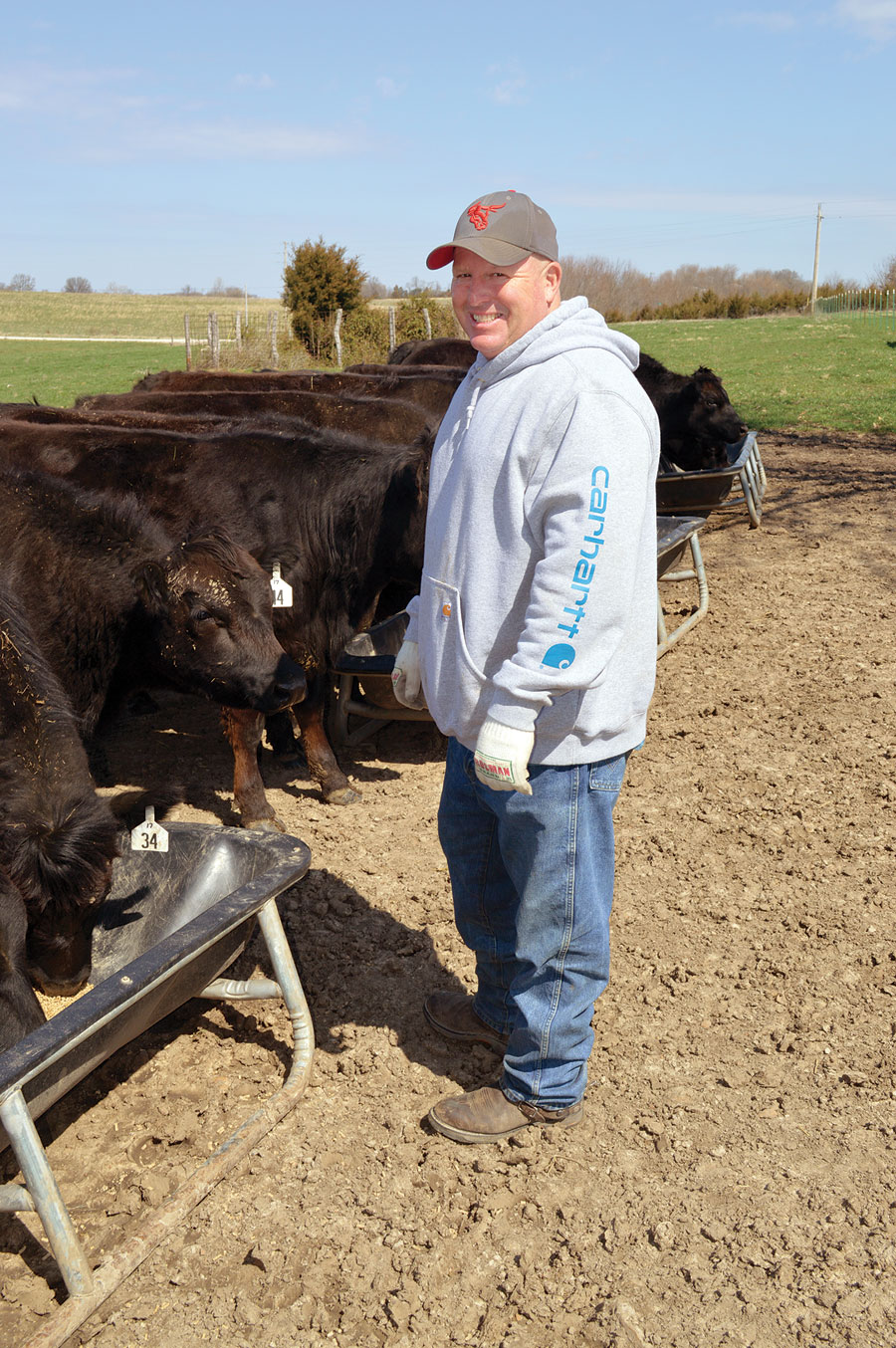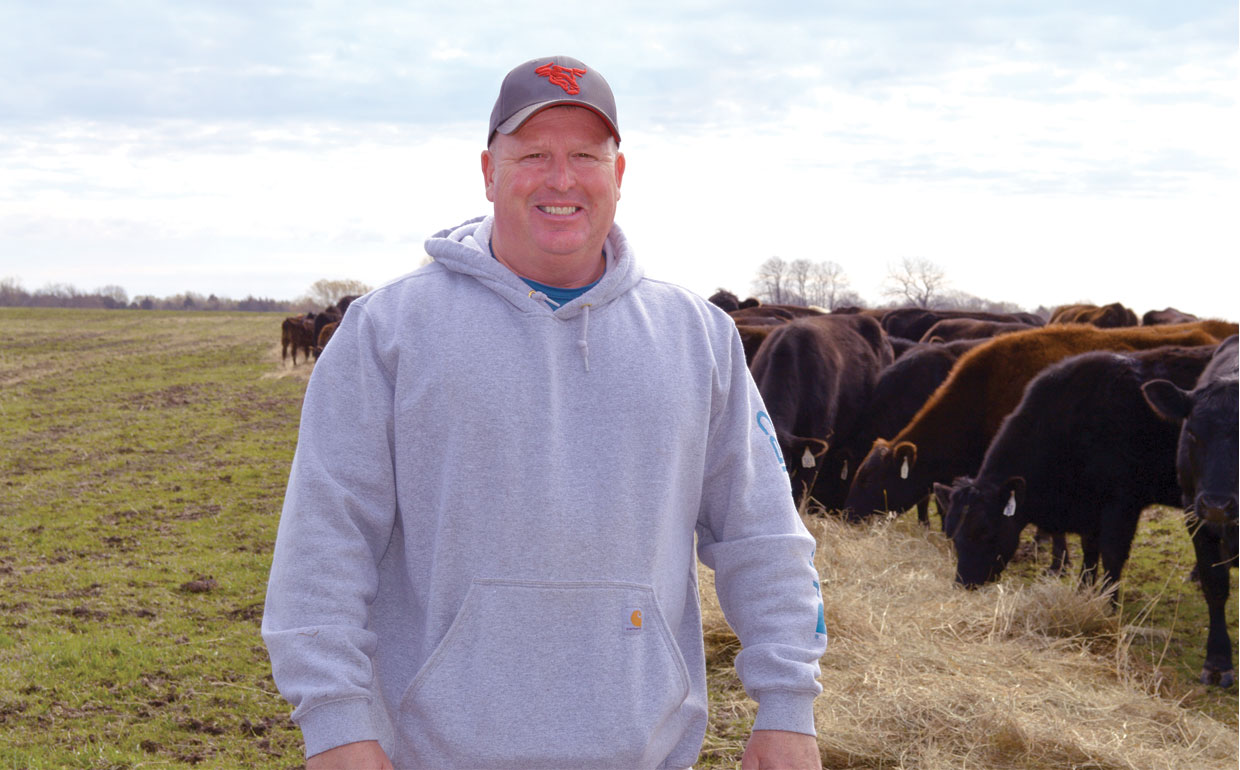
Brad Rader says multiple operations bring multiple benefits
Brad Rader remembers vividly the day he became a farmer.
“It all started with half a cow,” Brad recalled. He was 3 years old when his uncle, Clarence Forrester, gave Brad and his sister a cow to share. For years the siblings divided the profits from the calves they sold off of their co-owned bovine.
Brad grew his herd of commercial cattle through his childhood into adulthood. In 2012, after working at Kraft Foods for 22 years, Brad seized the opportunity to own and manage a couple cow/calf operations full time.
Today Brad owns solely and by partnership a total of 280 momma cows that run on 700 acres. At his home in Buffalo, Mo., Brad raises Angus-based commercial cows bred to Simmental or SimAngus bulls. He also works with Clarence to operate a commercial herd in Urbana, Mo. In addition, Brad partners with Keith Glor in Urbana, Mo., to run a commercial cow/calf business.
Though operating three farms can be hectic, Brad has discovered a benefit to managing multiple farms.
“One advantage of having three farms is I can compare the cattle and how they look,” Brad explained. If cows or calves in one of the herds seem to be lacking in condition compared to the other herds, Brad feeds grain or other supplements to that group to give them a boost.
In his decades of farming Brad has found one constant that makes a difference – quality hay. “Good hay over the winter really helps them,” Brad said. “I do all my own hay and fertilize. That is the key – having your own hay.”
Most of his hayfields are made up of orchard grass, fescue and red clover, plus a bit of brome. But he also grows a Gamagrass field, a bluestem field, and a switchgrass field. “We bale all three of those so the cattle get a variety,” Brad explained.
Brad spends much of his day feeding hay starting in December and ending in April, depending on the weather. Due to the size of his herds, he rolls out 6-by-5 round bales. “If you are selling hay or just feeding a smaller amount the 4-by-5 foot or 4-by 6-foot bales work well. But if you are feeding hay in numbers you can’t beat these. It cuts down travel time and everything,” Brad said.
In addition to quality hay, Brad makes sure his cattle have access to an assortment of minerals and supplements. The herds have free choice to minerals including MFA’s Ricochet and Super 10 Mineral, plus Purina’s Wind and Rain. “I try to keep plenty of supplements out for them including salt, mineral blocks, and iodine blocks. If one mineral is lacking something, another one picks it up. That’s just my theory,” Brad said.
Brad and his partners find that investing in quality bulls is another factor that contributes to good performing calves. “Bull selection is really crucial. We try to buy the best bulls we can because when you turn them out, they automatically become 50 percent of your herd,” Brad explained.
Their herd bulls are primarily registered Angus, Simmental and SimAngus. Brad and his partners purchase their herd bulls from top breeders in the area. “We try to have one bull for every 25 cows. That way we are not overworking the bulls during breeding season,” Brad said.
In recent years, Brad and Keith Glor, took a detour from their practice of solely using a herd bull and chose to AI their cows. They followed a synchronization schedule established by their AI technician and AI’d more than 100 cows.
Though the AI conception rate wasn’t as high as they had hoped, they are pleased with the outcome. “You can see a difference in the calves with the AI genetics. The heifers look really good and I appreciate the uniformity of them,” Brad stated.
Only time will tell whether it was worth the time and extra money. “When we sell these (AI’d heifers) we will know,” Brad commented with a smile.
Brad plans to continue to AI some of the cows and increase his knowledge of AI. “I want to get more familiar with AI and get better at it. I really like it and what you can do with AI genetics,” Brad commented.
Though Brad enjoys managing the cattle operations, his Quarter horses are his pride and joy. A couple of years ago, Brad purchased a stallion to use on his mares so he can raise colts.
“My favorite part of my day is after I get the hay fed, I catch one of my horses and just ride through all the cattle,” Brad said.







